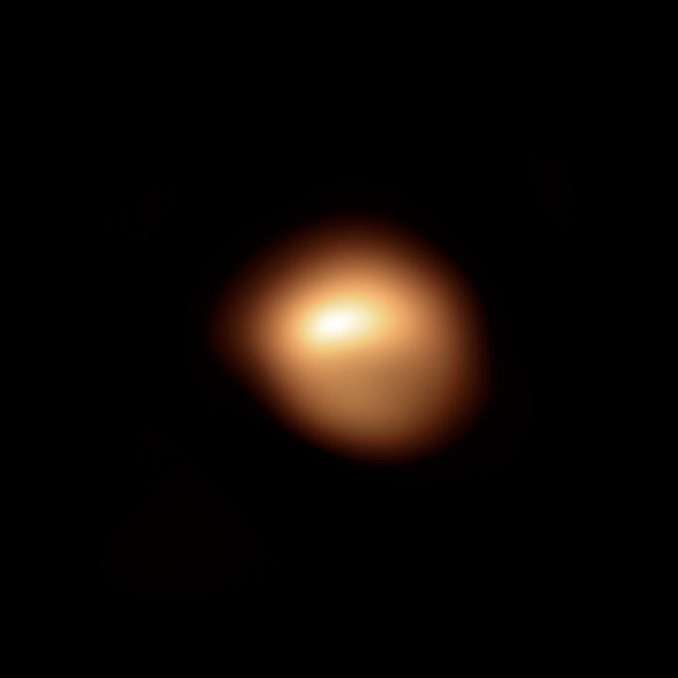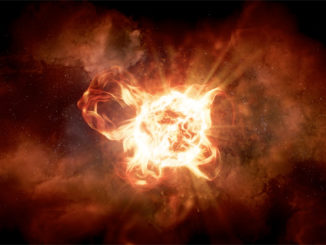
Betelgeuse, the red supergiant that marks Orion’s left shoulder, has been steadily dimming over the past several months, prompting widespread speculation the familiar star might be on the verge, astronomically at least, of exploding in a supernova blast.
Astronomers do not think that is the case – yet – but new images captured by the SPHERE and VISIR instruments attached to the European Southern Observatory’s Very Large Telescope provide dramatic evidence the star, 700 light years from Earth, is undergoing major changes, fading as well as appearing to change shape.
A team led by Miguel Montargès, an astronomer with KU Leuven in Belgium, has been monitoring Betelgeuse since December to get a better idea about what might be going on. The same team also observed the star in January 2019, before the dimming began, allowing dramatic before-and-after views:
In the more recent image, Betelgeuse looks decidedly lopsided, with a bright upper hemisphere and a much dimmer. seemingly smeared out lower half. Images collected by the VISIR instrument show flame-like infrared emissions from vast clouds of dust surrounding the star.
“The two scenarios we are working on are a cooling of the surface due to exceptional stellar activity or dust ejection towards us,” says Montargès. “Of course, our knowledge of red supergiants remains incomplete, and this is still a work in progress, so a surprise can still happen.”
Instruments attached to the VLT at ESO’s Paranal Observatory allow observations from the visible to the mid-infrared, allowing astronomers to image the surface of Betelgeuse and the material around it. “This is the only way we can understand what is happening to the star,” Montargès said.



